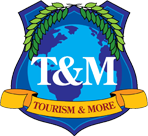Outdoor Safety
November 2011
Many people consider the winter months to be a time of tourism hibernation. Yet nothing could be further from the truth. Ski vacations and other winter sports turn the tourism industry from a limited product into a twelve-month a year product. The growth of the winter tourism industry in both hemispheres does not mean that this form of tourism is not without its perils. Winter tourism can be divided into several sub-categories of tourism. Included in these are winter outdoor activities, sun and surf activities for those who live in colder climates, and urban cultural activities. What makes the winter tourism season even more challenging is that it attracts a large number of people who are not accustomed to cold weather precautions and therefore often do not give the weather the respect that it demands. The same phenomenon occurs in sun ‘n sand destinations where people from colder climates tend to forget just how dangerous both the sun and the sea can be to those who are not cautious. To provide you guests with a safe and secure outdoor winter tourism season T&M suggests that you consider some of the following:
- Know your public. Do you attract a mixed public or one that is in need of cuddling or likes to take risk? Are your guests from one particular country and tend to speak a single language or do you attract guests from a wide variety of nations who speak different languages, have different dinning hours and do not share the same customs?
- Know the law. If we like it or not, we live in litigious societies. Make sure to consult with a good lawyer as to where your legal vulnerabilities may lay. It is a lot cheaper to take preventative action then to be tied up in court and end up being on the wrong end of a law suite. Remember while anyone can sue you for almost anything, taking legal precautions is the best way to protect your industry and yourself.
- Match your product to the appropriate target market. Make sure you market to those regions that can get to you easily. Winter travel can often be challenging, especially if road conditions are not always the best or visitors cannot use direct flights to get to your area. Take into account which are the transportation hubs that lead to your destination and what can go wrong at these hubs.
- Update your community’s list of local services. Make sure that you have accurate lists regarding everything from medical services to insurance claims. Out-of-door activities often attract people who have a higher tolerance of risk and no matter how cautious you are, some of these risks will materialize. Good risk management is another form of good marketing.
- Make sure that you know what your hotels’ policies are in case of major weather problems. In the snow-belt areas of the world this can mean anything from an unexpected blizzard to an avalanche, in the sea and sand destinations this can mean a medical emergency or a hurricane. In all cases weather can mean that visitors are forced to stay beyond their intended stay producing reservation problems along with transportation issues.
- Add a section to your web page. Add a safety and security section to your web page. Remind people that while no one can guarantee ultimate safety and security that we can all lessen the risk of becoming a victim if we follow simple procedures. Be aware of the fact that many tourists and visitors leave their minds at home when on vacation, so repetition of common sense precautions adds an extra level of caution.
- List what vaccinations are needed for your area and remind people that strenuous physical activity and heavy use of alcohol are not the best policy. While no one wants to scare tourists, telling most people what they need to do prior to a vacation provides most visitors with a sense that you care. While the après ski activities may make the vacation, winter sports mixed with alcohol may well result in tragedy.
- Remind people that vacations are most fun when activities are done with other people. Be it swimming or ice-skating the buddy system works best. Make sure that dangerous areas are clearly marked and in areas where many tourists flock for winter sports, borrow a page from the world of summer travel and develop winter lifeguards.
- Develop good personal communication plans. For example, many people do not carry a cell phone while skiing, but in case of accidents how would that person communicate or seek help? Work with your local police, ambulance units and first aid specialists along with computer and communication technologies to develop communication methods that do not interfere with the winter sports experience.
- Remember that the Earth has two hemispheres. Thus when the northern hemisphere is boiling in the sun, it is winter south of the Equator. Do not limit your marketing to only one region of the world. In a global economy, think globally and be prepared to provide hospitality to people from all corners of the globe.
- During the summer months, sell your destination as a winter location. The summer is the best time to sell winter vacations. During the heat of the summer visitors are seeking cooler solutions and want to dream about cooler experiences. These people already know your area so stress that a return winter vacation is a whole new experience in a place where they will not get lost.



